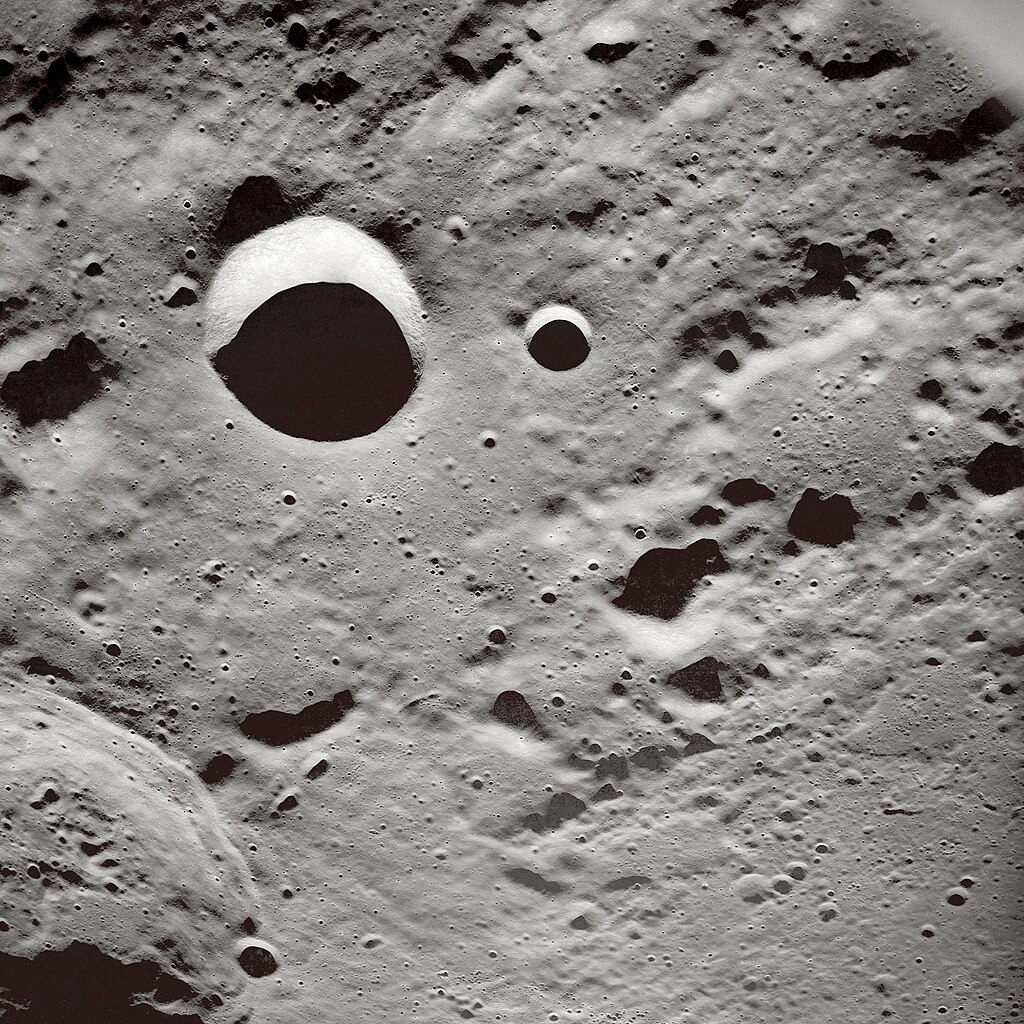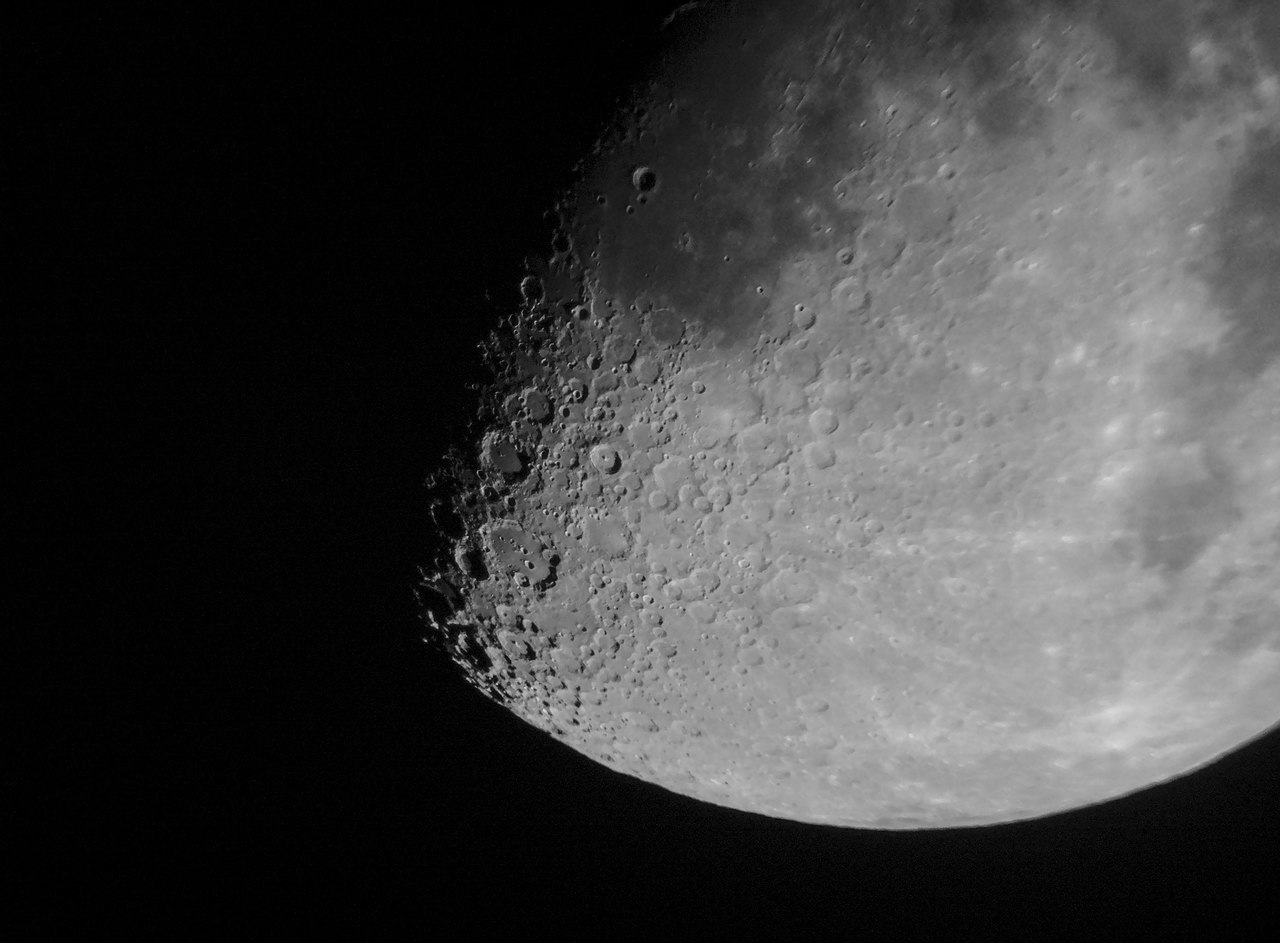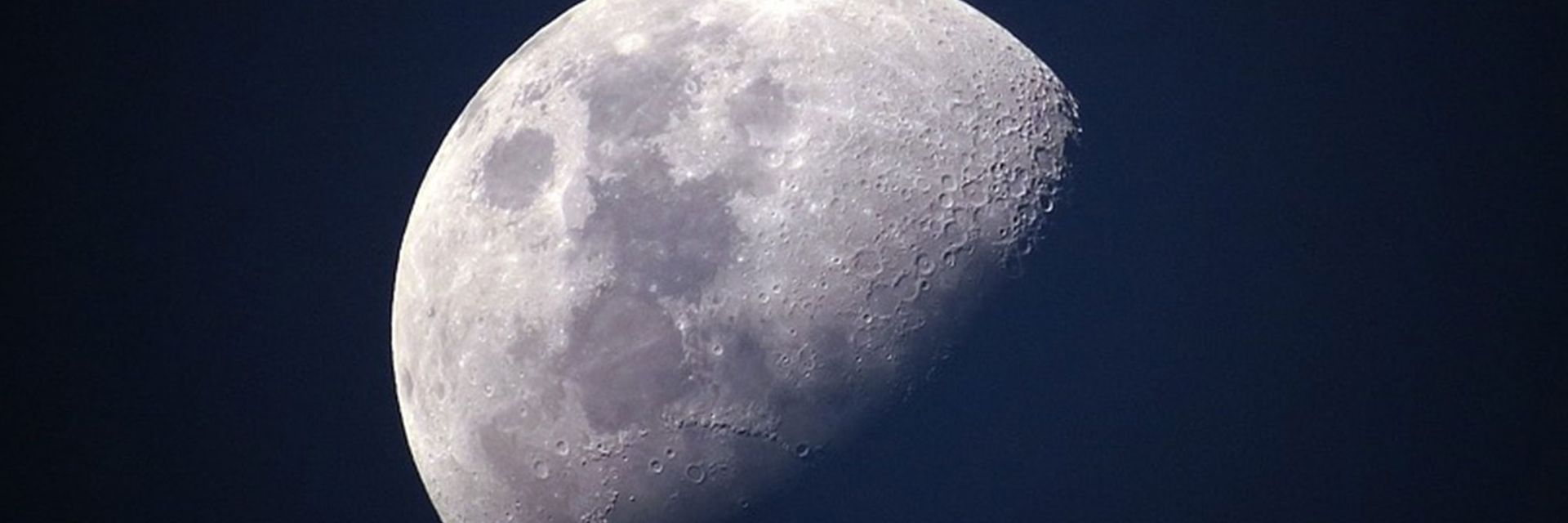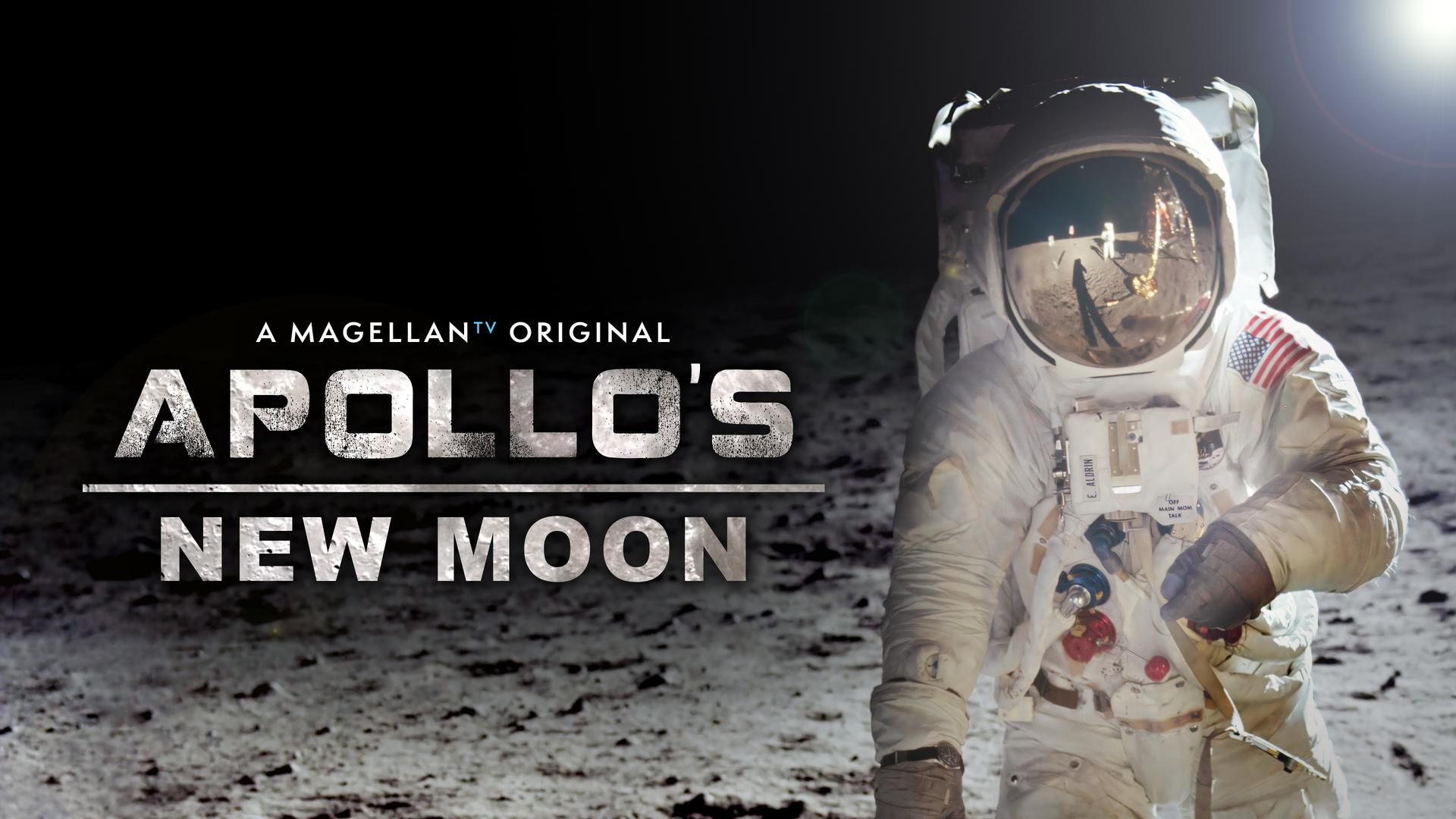Q&A with Writer/Director David Sky Brody
Have you seen the groundbreaking new science documentary Apollo’s New Moon? Once you hear what the writer/director of the film has to say about the amazing, and science-changing, discoveries made possible by the Apollo missions, you’ll want to. Director David Sky Brody (@davidskybrody) spoke with MagellanTV about some of the science behind the film, and why he believes Apollo played a “transformative role” in opening up key information about the Moon’s origins and, by extension, Earth’s future.
◊
MagellanTV (MGTV): Readers who have seen your documentary, Apollo’s New Moon, will be interested in how your background led you to this project.
David Sky Brody (DSB): I’m a long-time space geek, starting out my film career making industrials for NASA’s aerospace contractors. My first appearance in a NASA publication was in 1989 with the Lunar Teleoperations Simulator experiment we built for Space Studies Institute, Princeton. Video work on the National Aerospace Plane project led me to become the showrunner (Supervising Producer/Writer) of Inside Space, a half-hour weekly program on Syfy. We also did many long-form specials, like Apollo 13 – The Real Story, Carl Sagan: In Contact with the Cosmos, America’s Moon, and even a Star Wars special Episode One: Unauthorized. And we often went live with the Space Shuttle and from planetary encounters at JPL. So, I was basically the science dude on the Sci-Fi Channel.
Click to stream Apollo's New Moon!
In late 1999, Lou Dobbs and Sally Ride hired me away to come to their start-up, Space.com, where I remained Executive Producer for 16 years, as that company grew and changed. In addition to writing articles and running all the site’s video, audio and multimedia, it was my job to go on-air at NBC, CNN, Fox, Discovery, MSNBC, Al Jazeera, CNBC, and other news channels to explain space science stories, aerospace industry news, astronautics segments, and astronomical events. I also wrote, directed, and hosted a series of “infotainment” DVDs for Starry Night software. One of those, titled Tug of the Moon, was, in some ways, a precursor of Apollo’s New Moon.
MGTV: Why did you pick the science angle on Apollo?
DSB: We wanted to tell the biggest, most sweeping story we could; one that cast Apollo in its transformative role, between discovering the Moon’s deep past and realizing its key importance to humanity’s future. This production joins an extensive list of programs commemorating the 50th anniversary of Apollo 11: There are excellent astronaut-heroism films, political “space-race” documentaries, space-age pop-culture movies, and technology histories. But Project Apollo’s greatest achievement may well be to shed brilliant new light on the mystery of the Moon’s origins, and by extension, that of Earth and of life in our Solar System.
It took just a few pairs of Apollo astronaut eyes on the lunar terrain for the international science community’s theorists to realize they had been wrong about the forces that built that moonscape. And the revolution isn’t over. Sampling science begun during NASA’s push for the Moon in the 1960s points the way to what will likely be one of the biggest economic drivers of the later 21st century: lunar resources – energy and materials – harvested for use mostly in space.
MGTV: Before we move on, I’d like to ask some basic questions about the Moon for our readers who may be fresh to the subject. First off, what is the Moon made of?
DSB: Remarkably, our Moon and our Earth are made of exactly the same stuff. That was one of the most shocking results of the Apollo Project’s geology work. Other bodies in the Solar System are different. This led scientists to eventually understand that the Moon was born of a cosmically catastrophic collision between a Mars-sized body and the early proto-Earth. The Moon’s soil (called “regolith”) is – amazingly – about 42 percent oxygen. We’ll need that in space! About 20 percent of it is silicon, with smaller percentages of iron, calcium, aluminum, and magnesium.
Project Apollo’s greatest achievement may well be to shed brilliant new light on the mystery of the Moon’s origins.

Long shadows on the surface of the moon.
(Image courtesy of NASA Apollo, via Wikimedia)
That’s all great stuff to have if you want to build space-based civilization. The first elements we’ll want to lift are hydrogen and oxygen, extracted from the abundant water-ice in the deep shadowed caters near the Moon’s pole. Then, we probably go for the so-called rare earth metals. (Because they’re, you know, rare on Earth!) All those impact-holes punched in the Moon’s surface will let geologists look down through the layers to locate the most desirable metals. Moon mining will make much money. (Chant that mantra with me!)
MGTV: From Earth, the Moon seems sometimes to change color. Why is the Moon white, and why does the Moon look red or orange sometimes?
DSB: The Moon is actually gray. The NOAA-NASA-USAF DSCOVR satellite, orbiting one million miles “inward” (toward the Sun) of us catches the Moon transiting across the face of Earth. It’s shocking to see, in DSCOVR’s images, just how dark gray the Moon really is! Reflected sunlight makes it look white to us when the Moon is high. That’s because it’s the only nearby bright object in space; our eyes’ irises are opening up (like camera shutters) to take in the light of the stars. So, by comparison, the Moon seems bright. The Moon appears reddish-orange when it’s near the horizon because its light is coming to us through much thicker atmosphere. All that air is full of dust and smoke. The Moon also looks larger when it’s rising or setting, even though it really isn’t. Most of that size is illusion; a trick our brains are playing on us.
Now, if you see a deep red Moon high up in the sky, you are seeing a lunar eclipse: Our Earth has passed between the Moon and the Sun; we have cast our shadow on our sister world. But remember Earth’s atmosphere: The refracted light of all the sunrises and sunsets around our planet now beam down on the Moon, brightening up the shadow-lands with spooky, beautiful red light. Over the next several hours or so, as the Moon passes out of our shadow, it appears to return to white. Just remember: It’s really gray!
MGTV: What is the temperature up on the Moon? Why is there a big swing between the Moon’s coldest temperatures and its hottest?
DSB: When you look at the Moon from Earth – at any time other than the full moon or the new moon – you’ll see a very sharp shadow line. Bright sunlight scorches the “daytime”; and deep shade rules the “night.” Just a few molecules of sodium, potassium, and other elemental gases form a very tenuous lunar “atmosphere.” Basically, it’s a vacuum; only about as much air as above Earth at the height that the International Space Station flies! So, there’s virtually nothing to modulate temperatures, which range from minus 280°F in the darkness up to as much as 260°F in the sunlight. Even in their highly insulated, climate-controlled space suits, Apollo astronauts could feel the difference immediately as they stepped from the shadow cast by their Lunar Module out into the harsh light.

(Image credit Martin Bernardi, via Wikimedia)
You might think the far-from-the-Sun, double-dwarf planets Pluto-Charon would be colder than the Moon. Or, perhaps, Triton, the nitrogen-ice moon of Neptune. You’d be wrong. The coldest temperatures yet measured in the Solar System are on the floors of the permanently shadowed craters near the Moon’s poles. Lunar ice-miners of the future will need to bring a lot of heat!
MGTV: You say the Moon has a “tenuous atmosphere.” How will astronauts survive long stays there in the future? What are some of the long-term dangers of living in space?
DSB: We evolved in the waters of a planet with a strong magnetic field. As early as maybe 3.6 billion years ago, primitive bacteria mastered the trick of using sunlight to split water molecules (“photosynthesis”): They “ate” the hydrogen but let go of the oxygen, turning our atmosphere thick and warm, and our skies blue. This never happened on the Moon. It may have started on Mars and on Venus but got stalled or killed off. The good news: There’s an awful lot of oxygen on the Moon; it’s just locked up in the rocks or bonded to hydrogen in water-ice deposits lying deep within the shadowlands near the Moon’s poles. Using energy from the Sun – or small nuclear reactors – moon-dwellers will extract oxygen to fill their habitats and space-suits, and will ship off tanks of oxygen as a cash crop.
But with no magnetic field and little atmosphere, citizens of the Moon will be sitting ducks for solar energetic particles (SEPs) and galactic cosmic rays (GCRs). These go blasting through human bodies, leaving trails of cellular destruction in their wake. We can prevent that with dirt – lots of dirt. A meter or more of lunar soil provides shielding, so the living areas of Moon-bases will be, essentially, underground. It will be more correct to say you are living “in” the Moon than “on” the Moon. By the way, this will probably be the case on Mars as well, for the same reasons.
It took just a few years of analysis of Apollo’s data to disprove nearly everything people had assumed about the origin of the Moon – and that of Earth.
Also, we are just at the very beginning of understanding the long-term effects of dramatically lower gravity. After extended stays on the International Space Station, astronauts and cosmonauts have shown clear indications of cardiovascular deconditioning and bone loss mimicking the effects of osteoporosis, even though they exercised a significant amount of the time. We have virtually zero-time observing the human body in partial gravity; one-sixth Earth normal for the Moon, one-third for Mars. We might be pleasantly surprised – or it might become a show-stopper. It may be that the best way to live in orbital space will be through simulating gravity by spinning your (very large) habitat. And, yes, that habitat will need to be shielded from SEPs and GCRs. A shell of moon-dirt – or left-over asteroid slag – should do the trick nicely!
MGTV: How has Apollo science resonated through society?
DSB: Apollo was humanity’s proof-point. It took 360 years from the moment Galileo – the first modern scientist – first turned his small telescope to the Moon for humans to actually get there and conduct scientific sampling. But it took just a few years of analysis of Apollo’s data to disprove nearly everything people had assumed about the origin of the Moon – and that of Earth. Kids in grade schools around the world are now being taught that violent impacts built this garden of a planet we live on. Students in high schools are learning that the Moon is made of the same stuff as Earth because they evolved together.
Portrait of Galileo Galilei, by Justus Sustermans (1597-1681).
(Image courtesy of Wikimedia)
Another big takeaway is the amount of potential wealth present on the lunar surface. I’m one who has for decades believed that good stewardship of Earth includes expanding the range of human enterprise beyond the planet. There’s money to be made and, yes, it should be shared as equitably as possible. But those who are willing to risk – whether in currency or courage – should be allowed a motivating return on their investment.
And, last, even if we don’t ever venture back to the Moon, Apollo gave us a planetary perspective. The more we learn about other worlds, the better we’ll be able to manage this one. Apollo kicked off that righteous cycle.
MGTV: Why study the Moon? What are the goals and potential rewards of studying the Moon from its surface?
DSB: There are two essential “takeaways” from the Moon: To know where we came from; and to know where we’re going. Four billion years of history is written right on the face of the Moon. All those craters tell us how much cosmic junk bombarded us; we can hardly see that record on Earth because of weather, erosion, and plate tectonics renewing the surface of our living planet.
The rocks brought back by Apollo show what the Moon is made of and, importantly, what we can make of it. Reasonable people can debate whether or not we should expand human civilization into space. But, if we do, the pathway leads through the Moon. It’s about energy and materials. Lifting anything up out of the deep gravity well of Earth is very expensive. But, as you can tell from watching the astronauts bounce around there, the Moon – which is just 1/82nd the mass of Earth – exerts a much smaller pull. So launch from the Moon is cheaper and easier.
I’m glad Apollo brought us to the Moon, but we should have had a sustainable plan to stay there. Too much is made, in my opinion, of the “space-race” between the US and the USSR. The real race is between our burgeoning energy consumption/material use and the carrying capacity of Earth. Industrial development of the Moon buys us time – centuries of time – to bring Earth, and this brilliant virus called Humanity, back into balance. I’m pleased to see Amazon founder Jeff Bezos is directing a portion of his intellect, energy, and wealth to this exact goal through his Blue Origin space company.
Back in 1948, Kraft Ehricke, one of the original German rocket scientists brought to the United States, put it this way: “If God wanted man to become a spacefaring species, He would have given man a Moon.” We can use rockets to annihilate one another (and many other species on Earth). Or we can use rockets to turn Earth into the Garden of Eden some think it once was. Which would you rather do?
MGTV: 4K video didn’t exist 50 years ago. How are you achieving modern resolution in your documentaries?
DSB: Artificial Intelligence-assisted software to dramatically increase pixel-density has arrived just in time for this historically significant documentary. Adding to this virtuous timing: NASA took the initiative to ingest and release a large library of well-digitized images at close to their original resolution. It was relatively easy, though computer-intensive, to bring these sources into the 4K domain.
We also chased down the best transfers of the 16mm motion picture footage (from the Maurer camera in the Apollo Command and Lunar Modules), which astronauts used to document their journeys, a half-century ago.
We are deeply curious, long-armed, big-brained apes. I think the lure of the Moon and stars is baked into us; wired into our wetware.
.jpg)
NASA headquarters.
(Image courtesy of NASA/Glenn Benson, via Wikimedia)
In those 50 years, the digital revolution – spawned in part by the Apollo Project – has swept through just about every human endeavor. And it’s created a happy complementarity: The rise of the software coding arts that drive powerful microelectronics has recently made it possible for a new generation of scientists to extract fresh discoveries from the old Apollo samples. This same “digital insurgency” has made it possible for filmmakers to extract crisp, new renderings from the old Apollo analog film.
MGTV: All films change between first script and final print. How did this one evolve?
DSB: As we experimented with the AI-enhancement toolset, it became clear we didn’t have to settle for less than high-fidelity 4K images. The film was telling us it wanted to be about being there on, or above, the Moon. This, in turn, pushed us to dig deeper for the clearest and most accurate pieces of sound. We want you to feel like you’re the third astronaut on the surface, doing science, elbow-to-elbow with the crew.
There was also a lot of raw video from the surface to contend with; mission controllers had wanted to keep a close eye on the astronauts, and slow-scan TV was streamed live from the Moon. What survives are “kinescopes” – film recordings made from this video. These, in turn, have been transferred back to video – in most cases, to old Standard Definition analog video with its noise and head-switching and bad colorimetry and poor contrast. Adding insult to injury, much of this footage has been dubbed down multiple generations. So, we ended up using very little of this; only when it was critical to telling the story. We kept it morticed – in smaller windows – floating on contextually accurate moonscape images.
Apollo’s stills, on the other hand, are beautiful; generally shot with 70mm Hasselblad cameras on fine-grained, fast film stock. Sunlight, unfiltered by atmosphere, on the stark “magnificent desolation” (as Buzz Aldrin called it) made for dramatic, high-contrast, mostly monochromatic landscapes. NASA makes most of these stills available as digital files. Using our AI toolset, we blew them up much larger so we could perform moves, gently directing the viewer’s eye to the script-relevant part of the scene.
In the end, what – on the page – had been a straightforward science explainer, had blossomed – on the screen – into an immersive, emotional journey of discovery.
MGTV: You say in the film that “space has come to symbolize human ambition.” Please expand on what this means to you.
DSB: We are always reaching. I have this persistent vision of pre-human hominids climbing trees to stay safe for the night; as if the Moon and stars are pulling them up, away from danger, toward the light. The starry night is much more interesting – more puzzling – than the single-source sun of daytime. And we are deeply curious, long-armed, big-brained apes. I think the lure of the Moon and stars is baked into us; wired into our wetware. So, now – four million years of sky-wonder later – of course we sculpted technology to go see what these celestial objects are as soon as we possibly could. We just happen to be living at the glorious time when all those deep questions are starting to be answered, when those answers can be widely shared via 4K video that is starting to approach the level of detail our human eyes can perceive.
So, now those answers can be widely discussed – and new questions posed – through ubiquitous social media. One definition of the word ambition is “reaching up for something better”; precisely what we are doing in space.
MGTV: Finally, why did you want to make Apollo’s New Moon?
DSB: Over the course of my career I’ve been fortunate to interview many of the Apollo astronauts. Some were talkative and others guarded. But the common theme through all: Each of these men was willing to die to bring home the science. Too many of them have passed on. As a filmmaker, I have the opportunity to evangelize the breakthroughs they risked their lives to obtain, to enlighten viewers about these profound discoveries. Knowing how planets get built leads to knowing where they can flourish and, ultimately, to which ones can nurture life. Thanks to Apollo, we can begin to fathom where we all came from. Thanks to Apollo, we also have a rough roadmap for a bright future.
Title image courtesy of Wikimedia.
Ω
Kevin Martin is Senior Writer for MagellanTV. He writes on a wide variety of topics, including outer space, the fine arts, and modern history. He has had a long career as a journalist and communications specialist with both nonprofit and for-profit organizations. He resides in Glendale, California.


